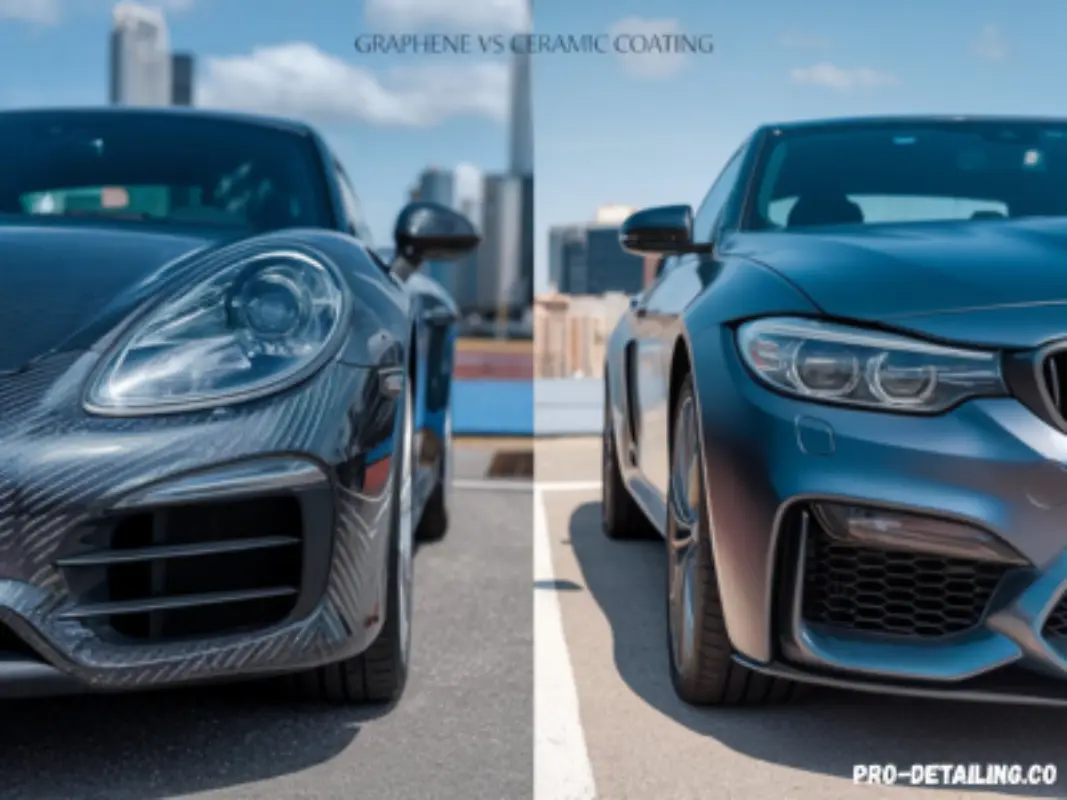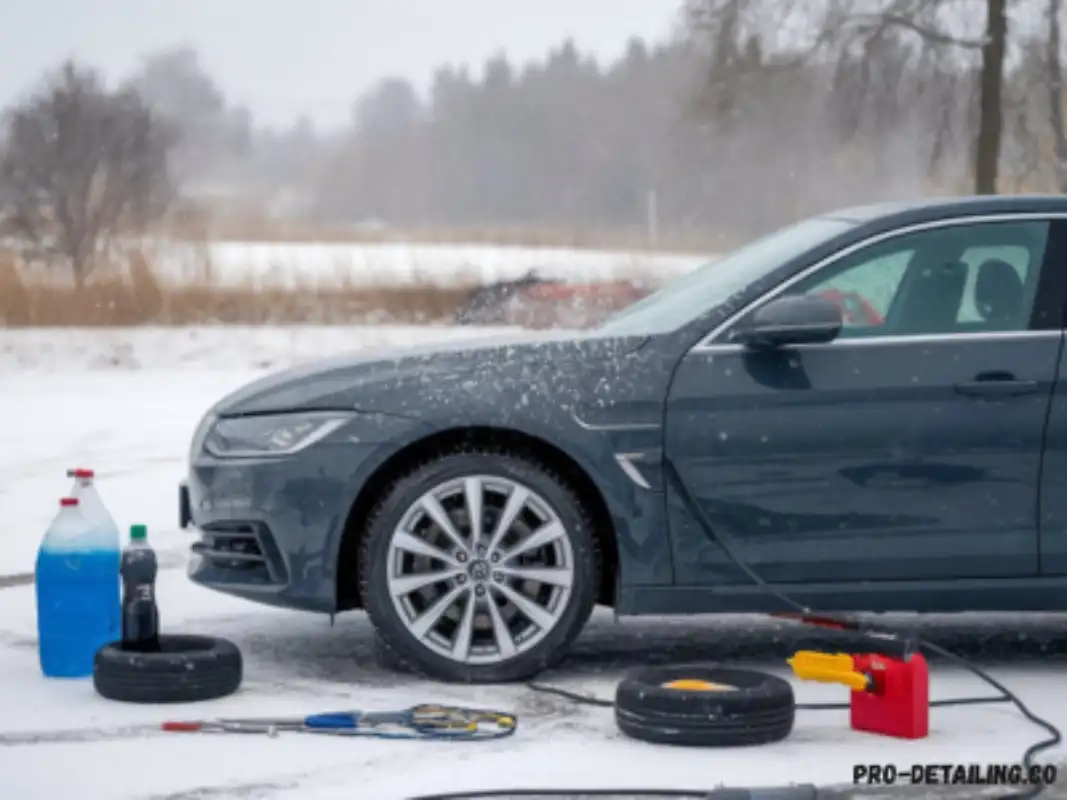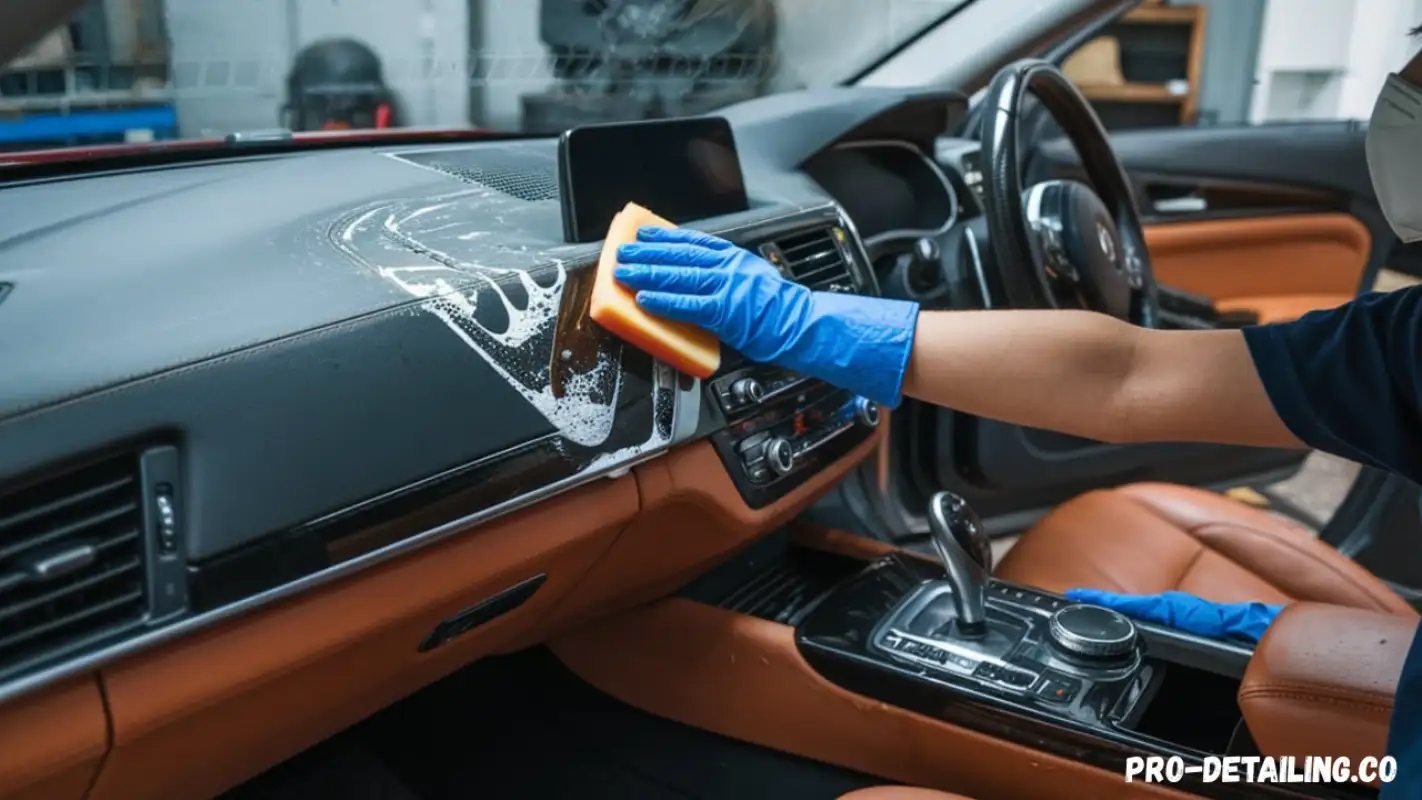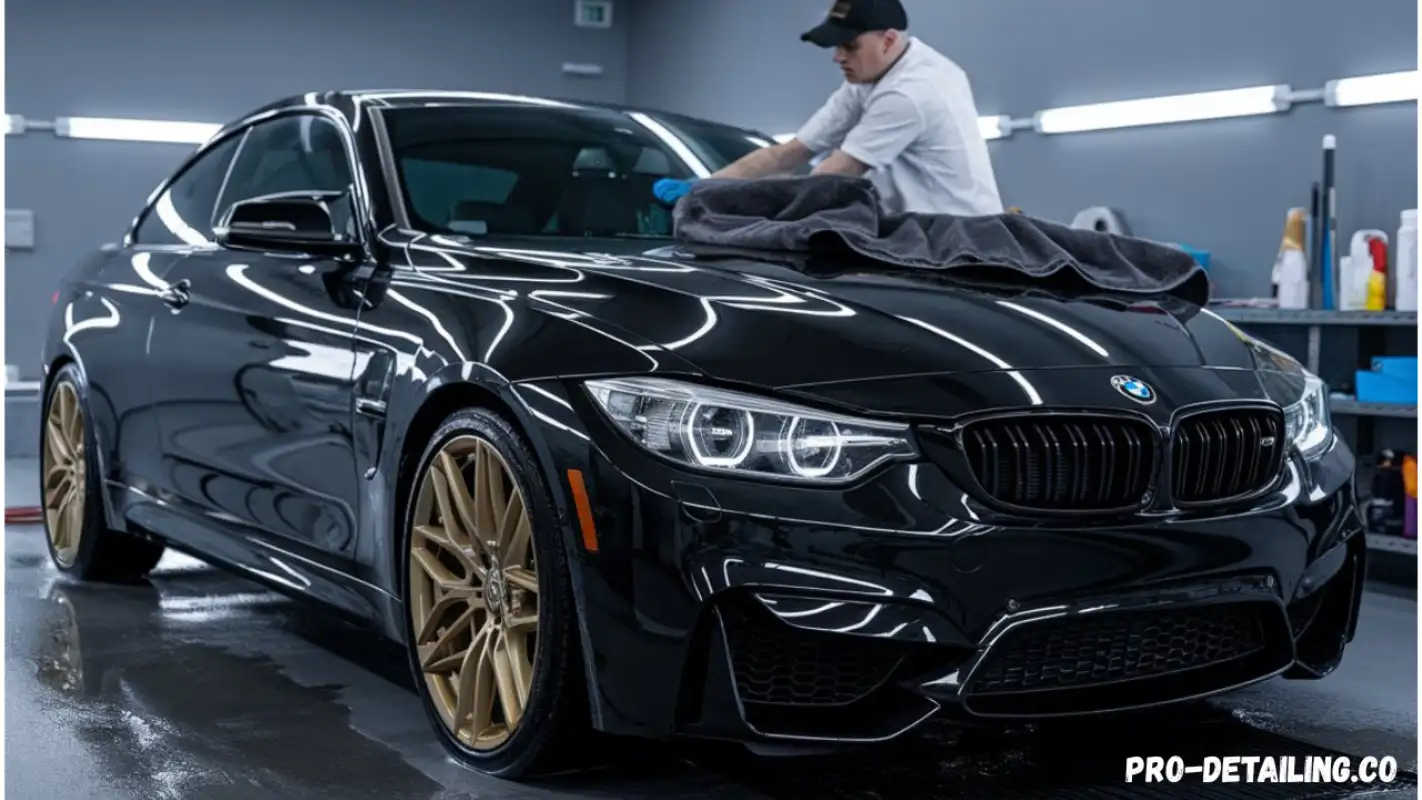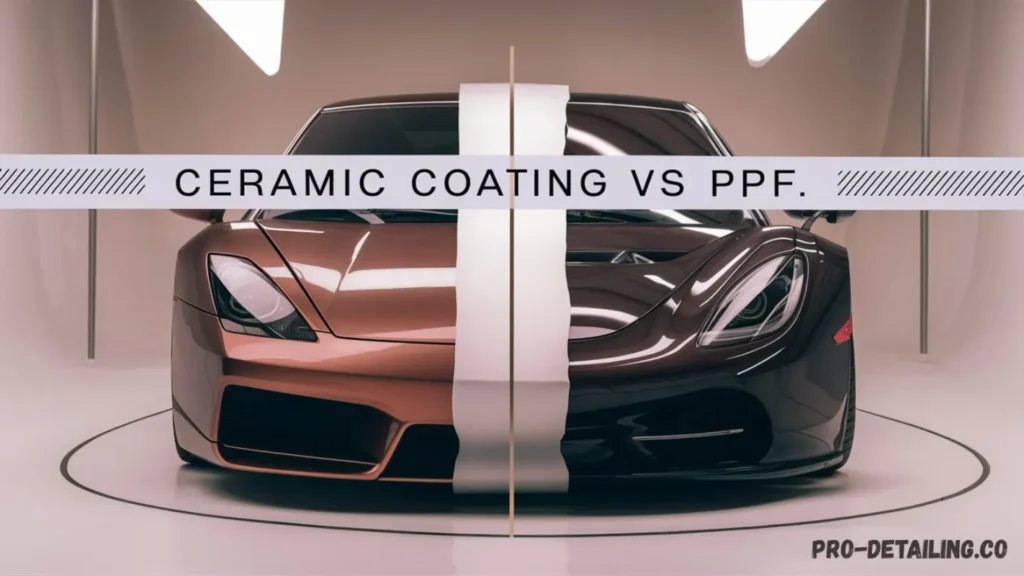If you’re serious about keeping your car looking brand new in the unpredictable weather and chaotic roads of the DMV area, you’ve probably heard of two main players: ceramic coating vs (PPF)paint protection film . But when it comes down to it, which one’s actually worth your money? Let’s break it down, no fluff just the facts and what’s right for your ride.
What Is Ceramic Coating?
Ceramic coating is a liquid polymer applied by hand that chemically bonds to your car’s paint. Think of it like an invisible armor that adds:
- A high-gloss, slick surface
- Hydrophobic properties (hello, easy washes)
- Resistance to UV rays, oxidation, and chemical stains
But heads up it doesn’t protect against rock chips or deep scratches. It’s perfect if your goal is to make your car look glossy, stay cleaner longer, and reduce how often you need to wash it.
What Is PPF (Paint Protection Film)?
PPF is a clear, durable film that’s physically applied to the car’s surface. It’s thicker than ceramic coating and made to absorb physical damage like:
- Rock chips
- Scratches and swirl marks
- Bug splatter and bird droppings
- Minor abrasions from the road
Some PPF options come with a self-healing feature, meaning small scratches disappear with heat or sunlight.
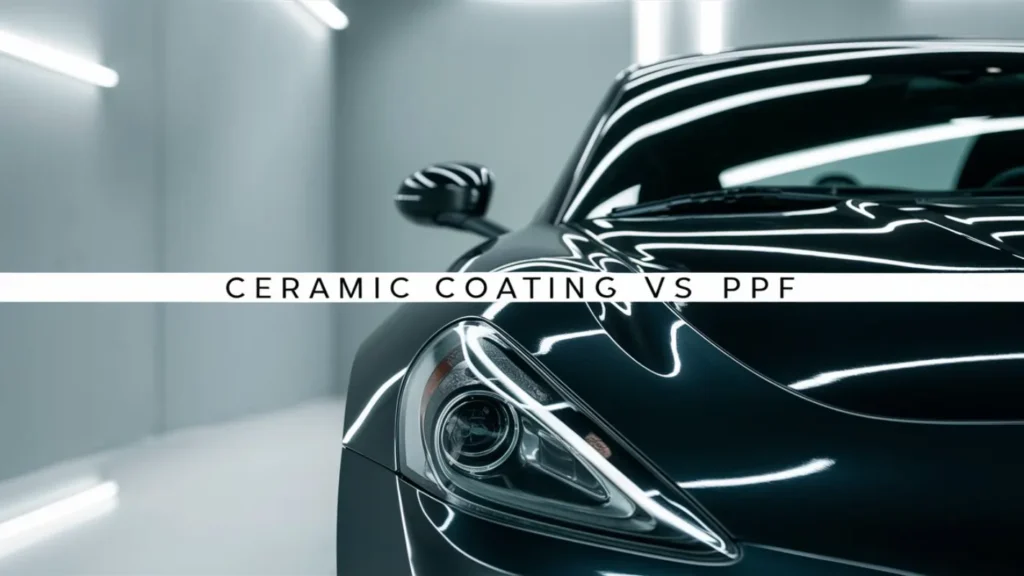
Ceramic Coating vs PPF: Key Differences DMV Drivers Should Know
Let’s go side-by-side to see what really matters for your vehicle in the DMV climate and road conditions.
| Feature | Ceramic Coating | Paint Protection Film (PPF) |
|---|---|---|
| UV Protection | ✅ Excellent | ✅ Excellent |
| Scratch Resistance | 🚫 Minimal | ✅ High |
| Rock Chip Protection | 🚫 None | ✅ Yes |
| Gloss & Shine | ✅ Deep gloss | ⚠️ Slightly muted |
| Self-Healing | ❌ No | ✅ Yes (in many films) |
| Hydrophobic Effect | ✅ Strong | ⚠️ Moderate (unless top-coated) |
| Maintenance | ✅ Easy clean | ⚠️ Needs occasional inspection |
| Cost | 💰 Less than PPF | 💸 Higher due to material + labor |
| Longevity | 🕒 2–5 years | 🕒 5–10 years |
Can You Use Both Ceramic Coating and PPF?
Yes, and that’s what most high-end detailers (including us at Pro Detailing in the DMV) recommend.
Here’s how it works:
- Apply PPF to high-impact zones: front bumper, hood, side mirrors, rocker panels.
- Apply ceramic coating over the rest of the vehicle and on top of the PPF.
This combo gives you the best of both worlds impact protection from PPF and ease of cleaning from ceramic coating.
Also Read this: Benefits of Ceramic Coating: The Ultimate Protection for Your Car
Which Is Better for You in the DMV Area?
If you’re cruising through Virginia, DC, or Maryland, here’s what you should factor in:
- Frequent highway driving or city stop-and-go? Go with PPF protect against chips and scratches.
- Daily driver in a clean suburb or garage-kept car? Ceramic coating may be enough.
- Want the most protection with the least hassle? Use both.
Ceramic Coating and PPF for DMV Drivers: Real Scenarios
Scenario 1: You Commute From Manassas to DC Daily
You’re racking up highway miles, stuck behind trucks kicking rocks at 70 mph. Go PPF on the front end, and ceramic coat the rest.
Scenario 2: You’ve Got a Weekend Cruiser in Loudoun County
Not a daily driver? Ceramic coating will keep it glossy and protected from UV damage when parked outside.
Scenario 3: You Drive Uber or Lyft in Northern Virginia
This is your moneymaker. Full PPF wrap + ceramic coating is a no-brainer to protect your investment long-term.
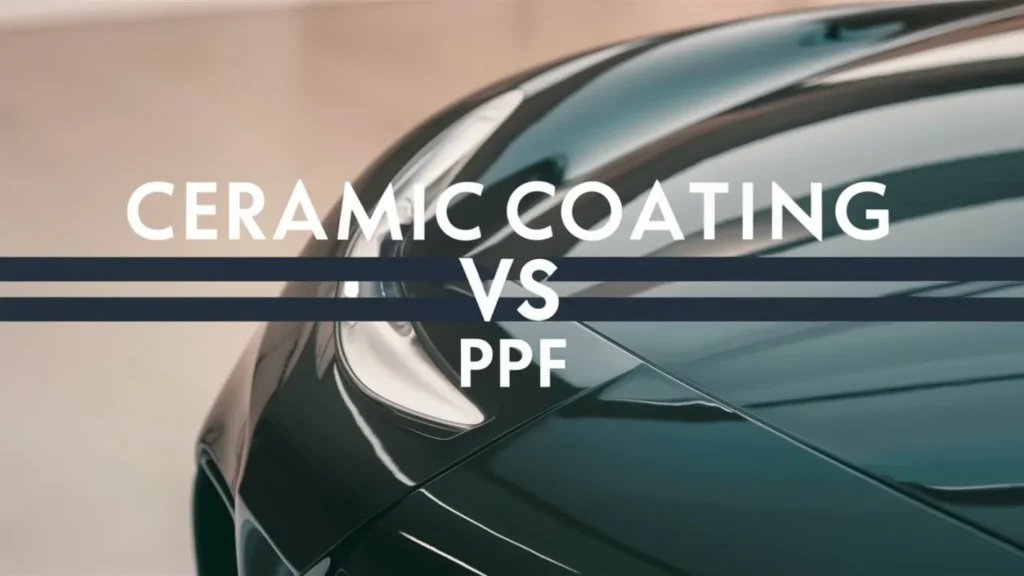
Why Choose Pro Detailing for Ceramic Coating and PPF in the DMV?
- We use top-tier materials only no cheap knockoffs.
- We’re local, so we know how the DMV climate affects paint over time.
- Our team is certified in both ceramic coating and PPF installations.
Whether you’re in Sterling, VA, DC, or anywhere in between, we’ll help you choose what’s right for your car and make it look showroom ready.
Frequently Asked Questions
Does ceramic coating protect against scratches?
It helps resist light swirl marks but won’t stop deep scratches or rock chips.
Can I apply ceramic coating myself?
DIY kits exist, but professional application guarantees longevity and proper bonding.
Is PPF worth it?
If you drive often or care about resale value, absolutely. The upfront cost saves big in paint repairs.
How long do ceramic coatings last?
With proper care, expect 2 to 5 years. We offer pro-grade options that can push 7+ years.
How much does full-body PPF cost?
Pricing varies by vehicle size, but full wraps can range from $2,000–$5,000+. Partial kits cost less.
End Notes: Ceramic Coating vs PPF
If you want gloss, UV protection, and ease of cleaning, ceramic coating is the way to go.
If you need real physical protection from chips and scratches, go with PPF.
And if you want ultimate paint protection and zero compromise, get both.
Book a free consultation with Pro Detailing today and we’ll guide you to the perfect solution for your ride. Whether you’re in DC traffic or rolling through Ashburn, we’ve got your car covered literally.

